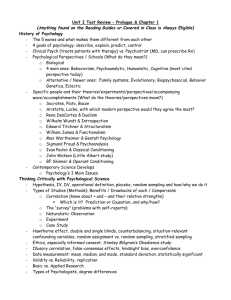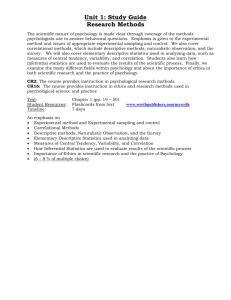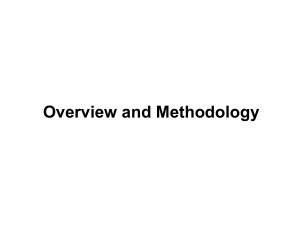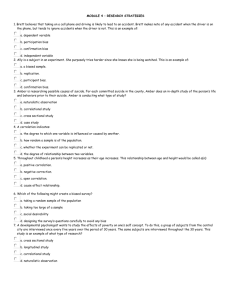AP Psychology – Review Day #1
advertisement
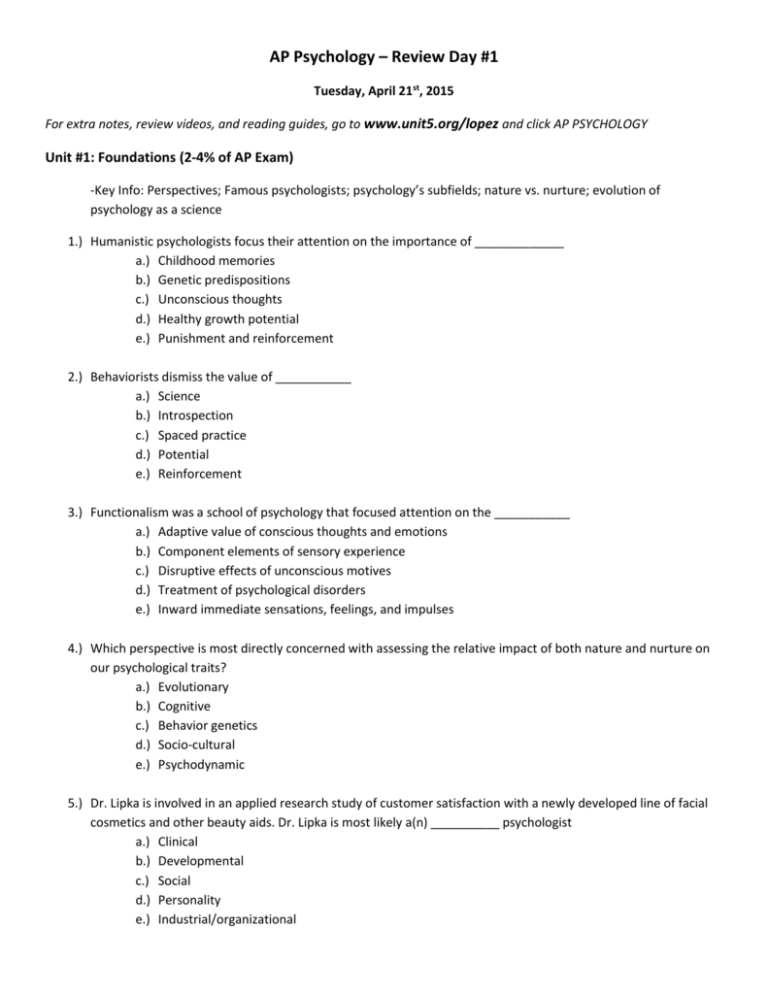
AP Psychology – Review Day #1 Tuesday, April 21st, 2015 For extra notes, review videos, and reading guides, go to www.unit5.org/lopez and click AP PSYCHOLOGY Unit #1: Foundations (2-4% of AP Exam) -Key Info: Perspectives; Famous psychologists; psychology’s subfields; nature vs. nurture; evolution of psychology as a science 1.) Humanistic psychologists focus their attention on the importance of _____________ a.) Childhood memories b.) Genetic predispositions c.) Unconscious thoughts d.) Healthy growth potential e.) Punishment and reinforcement 2.) Behaviorists dismiss the value of ___________ a.) Science b.) Introspection c.) Spaced practice d.) Potential e.) Reinforcement 3.) Functionalism was a school of psychology that focused attention on the ___________ a.) Adaptive value of conscious thoughts and emotions b.) Component elements of sensory experience c.) Disruptive effects of unconscious motives d.) Treatment of psychological disorders e.) Inward immediate sensations, feelings, and impulses 4.) Which perspective is most directly concerned with assessing the relative impact of both nature and nurture on our psychological traits? a.) Evolutionary b.) Cognitive c.) Behavior genetics d.) Socio-cultural e.) Psychodynamic 5.) Dr. Lipka is involved in an applied research study of customer satisfaction with a newly developed line of facial cosmetics and other beauty aids. Dr. Lipka is most likely a(n) __________ psychologist a.) Clinical b.) Developmental c.) Social d.) Personality e.) Industrial/organizational 6.) Introspection was the basic research tool used by _____________ in order to study people’s inner sensations and mental images a.) John Watson b.) Charles Darwin c.) Edward Titchener d.) B.F. Skinner e.) Mary Calkins Unit #2: Research (8-10% of AP Exam) -Key Info: Statistics and reasoning with stats; different types of research (case study, experiment, correlation, illusory correlations, surveys, naturalistic observation); the scientific attitude 1.) Which research method would be most appropriate for investigating the relationship between the religious beliefs of Americans and their attitudes towards abortion? a.) The survey b.) Naturalistic observation c.) The case study d.) Experimentation e.) Random assignment 2.) To discover the extent to which economic status can be used to predict political preferences, researchers are most likely to use _____________ a.) The case study approach b.) Naturalistic observation c.) Correlational measures d.) Experimental research e.) Random assignment 3.) During the past month, Henri and Sylvia each ate 10 candy bars, while Jerry ate 8, Tricia ate 6, and Tahli ate only 1. The mean numbers of candy bars eaten by the individuals was _________ a.) 3 b.) 5 c.) 7 d.) 8 e.) 10 4.) Professor Woo noticed that the distribution of students’ scores on her last biology test has an extremely small standard deviation. This indicates that the ______________ a.) Test was given to a very small class of students b.) Students’ scores tended to be very similar to one another c.) Mean test score was lower than the median score d.) Students generally performed very well on the test e.) Test was a poor measure of the students’ knowledge 5.) To understand the unusual behavior of an adult client, a clinical psychologist carefully investigates the client’s current life situation and his physical, socio-cultural, and educational history. Which research method has the psychologist used? a.) The survey b.) The case study c.) Experimentation d.) Naturalistic observation e.) Correlation 6.) Formulating testable hypotheses before conducting research is most directly useful for restraining a thinking error known as ___________ a.) Random sampling b.) The hindsight bias c.) The false consensus effect d.) Illusory correlation e.) Random assignment 7.) In order to study the effects of noise on worker productivity, researchers have one group of subjects work in a noisy room and a second group work in a quiet room. To ensure that any differences in productivity of the two groups actually result from different noise levels to which the groups are exposed, the researchers would use ___________ a.) The case study b.) Correlational measurement c.) Naturalistic observation d.) Replication e.) Random assignment 8.) Random sampling is to ___________ and random assignment is to ______________ a.) Correlational studies; case studies b.) Surveys; experiments c.) Illusory correlation; false consensus d.) Replication; correlation e.) Description; prediction Unit #3: Sensation & Perception (6-8% of AP Exam) -Key Info: Visual processing; auditory processes; touch/vestibular sense; perceptual organization (Gestalt); interpreting perceptions 1) After watching a scary television movie, Julie perceived the noise of the wind rattling her front windows as the sound of a burglar breaking into her house. Her mistaken interpretation best illustrates the influence of _____________ a.) Perceptual set b.) Visual capture c.) Perceptual adaptation d.) Bottom-up processing e.) Stroboscopic motion 2) Olfactory receptor cells are essential for our sense of _____________ a.) Kinesthesis b.) Smell c.) Touch d.) Hearing e.) Equilibrium 3) During the months when there is a large amount of pollen in the air, your hay fever severely affects your sense of smell. At the same time your food all seems to taste the same. This illustrates the importance of ________ a.) Accommodation b.) Sensory interaction c.) Kinesthesis d.) Serial processing e.) Sensory adaptation 4) After a small section of his basilar membrane was damaged, Jason experienced a noticeable loss of hearing for high-pitched sounds only. Jason’s hearing loss is best explained by the _______ theory a.) Gate-control b.) Frequency c.) Young-Hemholtz d.) Opponent-process e.) Place 5) The ability to detect whether your body is in a horizontal or vertical position depends most directly on _______ a.) Accommodation b.) Sensory adaptation c.) The vestibular sense d.) Olfactory receptors e.) Subliminal stimulation 6) The ability to simultaneously process the pitch, loudness, melody, and meaning of a song best illustrates ______ a.) Subliminal perception b.) Kinesthesis c.) Accommodation d.) Sensory adaptation e.) Parallel processing 7) The phenomenon of color constancy best demonstrates that _____________ a.) An object’s perceived color is influenced by its surrounding objects b.) The retina has three types of color receptors c.) The brain processes information about color and shape simultaneously d.) Quivering eye movements help to maintain the perception of color e.) Color vision depends on pairs of opposing retinal processes


